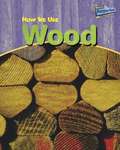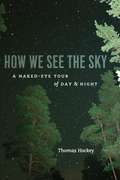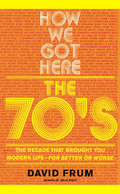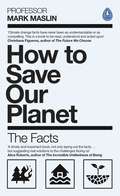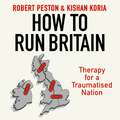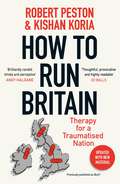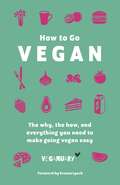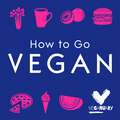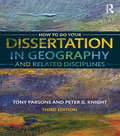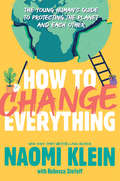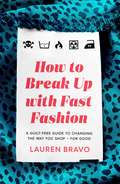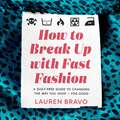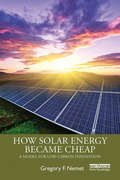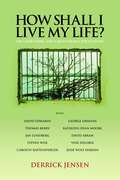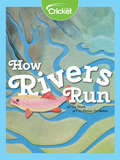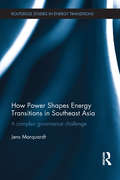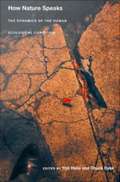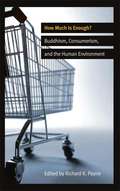- Table View
- List View
How We Use Wood
by Chris OxladeHow We Use Wood will give you answers to these and many other questions: Why is wood a good material for building boats? How do we get paper from wood? Why we use wood to make drain pipes?
How We See the Sky: A Naked-Eye Tour of Day & Night
by Thomas HockeyGazing up at the heavens from our backyards or a nearby field, most of us see an undifferentiated mess of stars—if, that is, we can see anything at all through the glow of light pollution. Today’s casual observer knows far less about the sky than did our ancestors, who depended on the sun and the moon to tell them the time and on the stars to guide them through the seas. Nowadays, we don’t need the sky, which is good, because we’ve made it far less accessible, hiding it behind the skyscrapers and the excessive artificial light of our cities. How We See the Sky gives us back our knowledge of the sky, offering a fascinating overview of what can be seen there without the aid of a telescope. Thomas Hockey begins by scanning the horizon, explaining how the visible universe rotates through this horizon as night turns to day and season to season. Subsequent chapters explore the sun’s and moon’s respective motions through the celestial globe, as well as the appearance of solstices, eclipses, and planets, and how these are accounted for in different kinds of calendars. In every chapter, Hockey introduces the common vocabulary of today’s astronomers, uses examples past and present to explain them, and provides conceptual tools to help newcomers understand the topics he discusses. Packed with illustrations and enlivened by historical anecdotes and literary references, How We See the Sky reacquaints us with the wonders to be found in our own backyards.
How We Know What We Know about Our Changing Climate: Scientists and Kids Explore Global Warming
by Lynne CherryWhen the weather changes daily, how do we really know that Earth's climate is changing? Here is the science behind the headlines - evidence from flowers, butterflies, birds, frogs, trees, glaciers and much more, gathered by scientists from all over the world, sometimes with assistance from young "citizen-scientists." And here is what young people, and their families and teachers, can do to learn about climate change and take action. Climate change is a critical and timely topic of deep concern, here told in an age-appropriate manner, with clarity and hope. Kids can make a difference!
How We Got Here: The 70s The Decade That Brought You Modern Life -- For Better Or Worse
by David FrumFor many, the 1970s evoke the Brady Bunch and the birth of disco. In this first, thematic popular history of the decade, David Frum argues that it was the 1970s, not the 1960s, that created modern America and altered the American personality forever. A society that had valued faith, self-reliance, self-sacrifice, and family loyalty evolved in little more than a decade into one characterized by superstition, self-interest, narcissism, and guilt. Frum examines this metamorphosis through the rise to cultural dominance of faddish psychology, astrology, drugs, religious cults, and consumer debt, and profiles such prominent players of the decade as Werner Erhard, Alex Comfort, and Jerry Brown. How We Got Here is lively and provocative reading.
How To Save Our Planet: The Facts
by Mark A. Maslin'Punchy and to the point. No beating around the bush. This brilliant book contains all the information we need to have in our back pocket in order to move forward' Christiana Figueres, Former Executive Secretary UN Climate Change Convention'Amazing book' Chris Evans, Virgin Radio Breakfast Show'Everyone should have this book' Rick Edwards, BBC Radio 5 Live'A timely and important book, not only laying out the facts...but suggesting real solutions to the challenges facing us' Professor Alice Roberts, Anatomist, Professor of Public Engagement in Science, University of Birmingham_________________________ How can we save our planet and survive the 21st century? How can you argue with deniers? How can we create positive change in the midst of the climate crisis? Professor Mark Maslin has the key facts that we need to protect our future. Global awareness of climate change is growing rapidly. Science has proven that our planet and species are facing a massive environmental crisis. How to Save Our Planet is a call to action, guaranteed to equip everyone with the knowledge needed to make change. Be under no illusion the challenges of the twenty-first century are immense. We need to deal with: climate change, environmental destruction, global poverty and ensure everyone's security. We have the technology. We have the resources. We have the money. We have the scientists, the entrepreneurs and the innovators. We lack the politics and policies to make your vision of a better world happen. So we need a plan to save our planet... How to Save Our Planet is your handbook of how we together can save our precious planet. From the history of our planet and species, to the potential of individuals and our power to create a better future, Maslin inspires optimism in these bleak times. We stand at the precipice. The future of our planet is in our hands. It's time to face the facts and save our planet from, and for, ourselves._________________________'A handbook of clearly established, authoritative facts and figures about the terrible toll we as humans have taken of our planet, plus ways in which we can lessen the impact. For laypeople like me, who can see what is happening but haven't always got the precise statistics to hand, it's hugely valuable' John Simpson CBE, BBC World Affairs Editor, Broadcaster, Author & Columnist'Saving the world is no small thing, but picking up this book's a good start' Paris Lees, Contributing Editor at British Vogue, campaigner'I love it. My kids love it' Chris Evans, Virgin Radio Breakfast Show'A no-nonsense crib sheet on the state of the world and how to help it' The I Newspaper
How To Run Britain: Therapy For A Traumatised Nation
by Robert PestonTHE MUST-READ BOOK FROM ITV'S ROBERT PESTON AND KISHAN KORIA, REVISED AND UPDATED FOLLOWING THE GENERAL ELECTION *Previously published as Bust?*---------Britain is facing uncertainty, threats and risk: new Prime Minister, new government, new political landscape, at home and abroad. But how much should change? And how much will change?How To Run Britain is a plea from Robert Peston and Kishan Koria to own what's gone wrong and make courageous reforms to everything, from the way we manage the economy to how we vote. We all know that, over the past fifteen years, British living standards have stagnated, inequality between - and within - communities has grown rampant, politicians have lost credibility and the trust of the nation. Millions say they are unheard and disenfranchised, victimised even. A far-right racist minority feels entitled to riot. But what do those problems really mean - and how do we fix them? How can politicians win the trust back from voters, from teachers, doctors, students, pensioners - all those who feel left behind by those who purport to act in their best interest?Peston and Koria's argument is simple: first, we must interrogate everything that has gone wrong, and build solutions from there. This is not the time to shy away from the recent past, nor should we indulge in it. Instead, we should take the lessons learned over the past fifteen years and build a future-focused, strategic plan for restoring economic, political and social security to the country we know and love.How To Run Britain is a manifesto for change in its simplest, clearest form, from the minds of two people who have seen it all.This is an updated, retitled edition of Bust? by Robert Peston and Kishan Koria, published in 2023.
How To Run Britain: Therapy For A Traumatised Nation
by Robert PestonTHE MUST-READ BOOK FROM ITV'S ROBERT PESTON AND KISHAN KORIA, REVISED AND UPDATED FOLLOWING THE GENERAL ELECTION *Previously published as Bust?*---------Britain is facing uncertainty, threats and risk: new Prime Minister, new government, new political landscape, at home and abroad. But how much should change? And how much will change?How To Run Britain is a plea from Robert Peston and Kishan Koria to own what's gone wrong and make courageous reforms to everything, from the way we manage the economy to how we vote. We all know that, over the past fifteen years, British living standards have stagnated, inequality between - and within - communities has grown rampant, politicians have lost credibility and the trust of the nation. Millions say they are unheard and disenfranchised, victimised even. A far-right racist minority feels entitled to riot. But what do those problems really mean - and how do we fix them? How can politicians win the trust back from voters, from teachers, doctors, students, pensioners - all those who feel left behind by those who purport to act in their best interest?Peston and Koria's argument is simple: first, we must interrogate everything that has gone wrong, and build solutions from there. This is not the time to shy away from the recent past, nor should we indulge in it. Instead, we should take the lessons learned over the past fifteen years and build a future-focused, strategic plan for restoring economic, political and social security to the country we know and love.How To Run Britain is a manifesto for change in its simplest, clearest form, from the minds of two people who have seen it all.This is an updated, retitled edition of Bust? by Robert Peston and Kishan Koria, published in 2023.
How To Run Britain: Therapy For A Traumatised Nation
by Robert PestonTHE MUST-READ BOOK FROM ITV'S ROBERT PESTON AND KISHAN KORIA, REVISED AND UPDATED FOLLOWING THE GENERAL ELECTION *Previously published as Bust?*---------Britain is facing uncertainty, threats and risk: new Prime Minister, new government, new political landscape, at home and abroad. But how much should change? And how much will change?How To Run Britain is a plea from Robert Peston and Kishan Koria to own what's gone wrong and make courageous reforms to everything, from the way we manage the economy to how we vote. We all know that, over the past fifteen years, British living standards have stagnated, inequality between - and within - communities has grown rampant, politicians have lost credibility and the trust of the nation. Millions say they are unheard and disenfranchised, victimised even. A far-right racist minority feels entitled to riot. But what do those problems really mean - and how do we fix them? How can politicians win the trust back from voters, from teachers, doctors, students, pensioners - all those who feel left behind by those who purport to act in their best interest?Peston and Koria's argument is simple: first, we must interrogate everything that has gone wrong, and build solutions from there. This is not the time to shy away from the recent past, nor should we indulge in it. Instead, we should take the lessons learned over the past fifteen years and build a future-focused, strategic plan for restoring economic, political and social security to the country we know and love.How To Run Britain is a manifesto for change in its simplest, clearest form, from the minds of two people who have seen it all.This is an updated, retitled edition of Bust? by Robert Peston and Kishan Koria, published in 2023.
How To Go Vegan: The why, the how, and everything you need to make going vegan easy
by VeganuaryGoing vegan is easy!Whether you're already a full-time vegan, considering making the switch or know someone who is, this book will give you all the tools you need to make the change towards a healthier, happier and more ethical lifestyle. How to Go Vegan includes...Why try vegan?Animal welfare, the environment, health benefits and your personal adventure.Vegan at homeSurprisingly vegan foods, reading labels, vegan ingredient essentials, easy replacements, how to be the only vegan in the familyVegan out in the worldEating out, eating at friends' houses, answering questions from loved ones, travelling veganLiving the vegan lifestyleMeal plans, tips and tricks, what to do if you're struggling, how to celebrate being a veganHow to go vegan. It's easier than you think.
How To Go Vegan: The why, the how, and everything you need to make going vegan easy
by VeganuaryEver thought about eating less meat and fewer dairy products? Concerned about animal welfare and the environment? Interested in the health benefits of a plant-based lifestyle? This is the book for you. In this fun, easy to follow and informative guide, the team behind the charity Veganuary provide everything you need to make changes towards leading a healthier, more ethical and sustainable lifestyle. From your motivations, tips for eating out, easy substitutions and making sure you get the right nutrients, this book is a lifesaver for vegans, those wanting to give veganism a try, or for friends and family. Try going vegan for one month - with How To Be Vegan it is easier than you think.
How To Go Vegan: The why, the how, and everything you need to make going vegan easy
by Veganuary Trading LimitedA short guide to going vegan - the why, the what and the how.Ever thought about eating less meat and fewer dairy products? Concerned about animal welfare and the environment? Interested in the health benefits of a plant-based lifestyle? This is the book for you. In this fun, easy to follow and informative guide, the team behind the charity Veganuary provide everything you need to make changes towards leading a healthier, more ethical and sustainable lifestyle. From your motivations, tips for eating out, easy substitutions and making sure you get the right nutrients, this book is a lifesaver for vegans, those wanting to give veganism a try, or for friends and family. Try going vegan for one month - with How To Be Vegan it is easier than you think.(P)2017 Hodder & Stoughton
How To Do Your Dissertation in Geography and Related Disciplines
by Tony Parsons Peter G KnightThis book provides undergraduates with a step-by-step guide to successfully carrying out an independent research project or dissertation. The book addresses each stage of the project by answering the questions that a student is likely to ask as the work progresses from choosing the subject area and planning the data collection through to producing illustrations and writing the final report. Most undergraduates in geography and related disciplines are required to undertake individual projects as part of their degree course; this book is a source of constructive, practical advice. This new third edition continues the tradition of friendly, well-informed but informal support, and continues to focus on answering the specific questions that students typically ask at each stage of the project. The new edition brings the text completely up to date by taking into account changes within the discipline and changes in the ways that students work. New digital media, social networking, mobile technology, e-journals, anti-plagiarism software, ethics approval rules and risk assessments are among the issues that this new edition takes into account. The new edition also broadens the book’s appeal by extending its coverage of the wide range of different approaches to geographical research, with expanded coverage of qualitative research, Geographic Information Systems, and new approaches to research design in both physical and human geographies
How To Change Everything: The Young Human's Guide to Protecting the Planet and Each Other
by Naomi Klein Rebecca StefoffA long-awaited guide to climate action and justice for young readers by bestselling, award-winning, internationally acclaimed writer and climate activist Naomi Klein.Temperatures are rising all over the world, leading to wildfires, droughts, animal extinctions and ferocious storms -- climate change is real. But how did we get to this state, and what can we do next? What if we could work to protect the planet, while also taking action to make life fairer and more equal for the people who live on it? We can -- if we're willing to change everything. In her first book written for young readers, internationally acclaimed, bestselling author and social activist Naomi Klein, with Rebecca Steffof, lays out the facts and challenges of climate change and the movement for climate justice. Using examples of change and protest from around the world, including profiles of young activists from a wide range of backgrounds, Klein shows that young people are not just part of the climate change movement, they are leading the way. How to Change Everything will provide readers with clear information about how our planet is changing, but also, more importantly, with inspiration, ideas, and tools for action. Because young people can help build a better future. Young people can help decide what happens next. Young people can help change everything.
How To Break Up With Fast Fashion: A guilt-free guide to changing the way you shop – for good
by Lauren Bravo'A funny, achievable guide' Observer'Lauren Bravo is one of my favourite writers' Dolly Alderton'Bravo will inspire you to repair, recycle and give old items a new lease of life' StylistYou probably know the statistics: global clothing production has roughly doubled in just 15 years, and every year an estimated 300,000 tonnes of used clothing ends up in UK landfill.Fast fashion is the ultimate toxic relationship. It's bad news for the planet, our brains and our bank balances. We can't go on like this; our shopping habits need an overhaul.Journalist Lauren Bravo loves clothes more than anything, but she's called time on her affair with fast fashion in search of a slower, saner way of dressing. In this book, she'll help you do the same.How To Break Up With Fast Fashion will help you to change your mindset, fall back in love with your wardrobe and embrace more sustainable ways of shopping - from the clothes swap to the charity shop. Full of refreshing honesty and realistic advice, Lauren will inspire you to repair, recycle and give your unloved items a new lease of life without sacrificing your style.Because fashion belongs to everyone, but no outfit should cost us the earth.
How To Break Up With Fast Fashion: A guilt-free guide to changing the way you shop – for good
by Lauren Bravo'A funny, achievable guide' Observer'Lauren Bravo is one of my favourite writers' Dolly Alderton'Bravo will inspire you to repair, recycle and give old items a new lease of life' StylistYou probably know the statistics: global clothing production has roughly doubled in just 15 years, and every year an estimated 300,000 tonnes of used clothing ends up in UK landfill.Fast fashion is the ultimate toxic relationship. It's bad news for the planet, our brains and our bank balances. We can't go on like this; our shopping habits need an overhaul.Journalist Lauren Bravo loves clothes more than anything, but she's called time on her affair with fast fashion in search of a slower, saner way of dressing. In this book, she'll help you do the same.How To Break Up With Fast Fashion will help you to change your mindset, fall back in love with your wardrobe and embrace more sustainable ways of shopping - from the clothes swap to the charity shop. Full of refreshing honesty and realistic advice, Lauren will inspire you to repair, recycle and give your unloved items a new lease of life without sacrificing your style.Because fashion belongs to everyone, but no outfit should cost us the earth.
How To Break Up With Fast Fashion: A guilt-free guide to changing the way you shop – for good
by Lauren BravoYou probably know the statistics: global clothing production has roughly doubled in just 15 years, and every year an estimated 300,000 tonnes of used clothing ends up in UK landfill. Fast fashion is the ultimate toxic relationship. It's bad news for the planet, our brains and our bank balances. We can't go on like this; our shopping habits need an overhaul.Journalist Lauren Bravo loves clothes more than anything, but she's called time on her affair with fast fashion in search of a slower, saner way of dressing. In this book, she'll help you do the same. How To Break Up With Fast Fashion will help you to change your mindset, fall back in love with your wardrobe and embrace more sustainable ways of shopping - from the clothes swap to the charity shop. Full of refreshing honesty and realistic advice, Lauren will inspire you to repair, recycle and give your unloved items a new lease of life without sacrificing your style. Because fashion belongs to everyone, but no outfit should cost us the earth. (P)2020 Headline Publishing Group Ltd
How Spaces Become Places: Place Makers Tell Their Stories
by John F. ForesterUseful and inspiring cases illustrate participatory placemaking practices and strategies.How Spaces Become Places tells stories of place makers who respond to daunting challenges of affordable housing, racial violence, and immigration, as well as community building, arts development, safe streets, and coalition-building. The book's thirteen contributors share their personal experiences tackling complex and contentious situations in cities ranging from Brooklyn to Los Angeles and from Paris to Detroit. These activists and architects, artists and planners, mediators and gardeners transform ordinary spaces into extraordinary places.These place makers recount working alongside initially suspicious residents to reclaim and enrich the communities in which they live. Readers will learn how place makers listen and learn, diagnose local problems, convene stakeholders, build trust, and invent solutions together. They will find instructive examples of work they can do within their own communities. In the aftermath of the pandemic and the murder of George Floyd, the editor argues, these accessible practice stories are more important than ever.
How Solar Energy Became Cheap: A Model for Low-Carbon Innovation
by Gregory F. NemetSolar energy is a substantial global industry, one that has generated trade disputes among superpowers, threatened the solvency of large energy companies, and prompted serious reconsideration of electric utility regulation rooted in the 1930s. One of the biggest payoffs from solar’s success is not the clean inexpensive electricity it can produce, but the lessons it provides for innovation in other technologies needed to address climate change. Despite the large literature on solar, including analyses of increasingly detailed datasets, the question as to how solar became inexpensive and why it took so long still remains unanswered. Drawing on developments in the US, Japan, Germany, Australia, and China, this book provides a truly comprehensive and international explanation for how solar has become inexpensive. Understanding the reasons for solar’s success enables us to take full advantage of solar’s potential. It can also teach us how to support other low-carbon technologies with analogous properties, including small modular nuclear reactors and direct air capture. However, the urgency of addressing climate change means that a key challenge in applying the solar model is in finding ways to speed up innovation. Offering suggestions and policy recommendations for accelerated innovation is another key contribution of this book. This book will be of great interest to students and scholars of energy technology and innovation, climate change and energy analysis and policy, as well as practitioners and policymakers working in the existing and emerging energy industries.
How Shall I Live My Life? On Liberating the Earth from Civilization
by Derrick JensenInterviews with Vine Deloria, Jesse Wolf Hardin, David Abram, Kathleen Dean Moore, Carolyn Raffensperger, George Draffan, Steven Wise, Jan Lundberg, Thomas Berry, David Edwards. In this collection of interviews, Derrick Jensen discusses the destructive dominant culture with ten people who have devoted their lives to undermining it. Whether it is Carolyn Raffensperger and her radical approach to public health, or Thomas Berry on perceiving the sacred; be it Kathleen Dean Moore reminding us that our bodies are made of mountains, rivers, and sunlight; or Vine Deloria asserting that our dreams tell us more about the world than science ever can, the activists and philosophers interviewed in How Shall I Live My Life? each bravely present a few of the endless forms that resistance can and must take. Hailed as the philosopher poet of the ecological movement, Derrick Jensen is the widely acclaimed author of Endgame, A Language Older Than Words, The Culture of Make Believe (a finalist for the 2003 J. Anthony Lukas Book Prize), and Walking on Water, among many others. Jensen's writing has been described as "breaking and mending the reader's heart" (Publishers Weekly). Author, teacher, activist, and leading voice of uncompromising dissent, he regularly stirs auditoriums across the country with revolutionary spirit. He lives in Crescent City, California.
How Rivers Run
by Liz HuyckHave you ever wondered how a river forms, which animals live near rivers, or where those rivers lead? Rivers are a vital part of life and the ecosystem. Rivers help transport water to humans and animals as well. It can also be used to create energy. Water from rivers can end up in many different places downstream!
How Power Shapes Energy Transitions in Southeast Asia: A complex governance challenge (Routledge Studies in Energy Transitions)
by Jens MarquardtAn understanding of the role of energy-related governance systems and the conditions required for a shift towards renewables in developing countries is urgently needed in order to tap into the global potential of low-carbon development. Although renewable energy sources have become technically feasible and economically viable, social and political factors continue to persist as the most critical obstacles for their dissemination. How Power Shapes Energy Transitions in Southeast Asia conceptualizes power for the field of sustainable energy governance. Based on empirical findings from the Philippines and Indonesia, the book develops an analytical approach that incorporates power theory into a multi-level governance framework. The book begins with a profound background on renewable energy development around the world and presents major trends in development cooperation. A power-based multi-level governance approach is introduced that is rooted in development thinking. Examining how coordination and power relations shape the development and dissemination of renewable energy technologies, the book also shows how decentralization affects low carbon development in emerging economies. Sparking debate on the ways in which energy transitions can be triggered and sustained in developing countries, this book will be of great interest to students and scholars of renewable energy development and environmental politics and governance as well as practitioners in development cooperation.
How Nature Speaks: The Dynamics of the Human Ecological Condition
by Yrjö Haila Chuck DykeHow Nature Speaks illustrates the convergence of complexity theory in the biophysical and social sciences and the implications of the science of complexity for environmental politics and practice. This collection of essays focuses on uncertainty, surprise, and positionality--situated rather than absolute knowledge--in studies of nature by people embedded within the very thing they purport to study from the outside. The contributors address the complicated relationship between scientists and nature as part of a broader reassessment of how we conceive of ourselves, knowledge, and the world that we both inhabit and shape. Exploring ways of conceiving the complexity and multiplicity of humans' many interactive relationships with the environment, the contributors provide in-depth case studies of the interweaving of culture and nature in socio-historical processes. The case studies focus on the origin of environmental movements, the politicization of environmental issues in city politics, the development of a local energy production system, and the convergence of forest management practices toward a dominant scheme. They are supported by explorations of big-picture issues: recurring themes in studies of social and environmental dynamics, the difficulties of deliberative democracy, and the potential gains for socio-ecological research offered by developmental systems theory and Pierre Bourdieu's theory of intentionality. How Nature Speaks includes a helpful primer, "On Thinking Dynamically about the Human Ecological Condition," which explains the basic principles of complexity and nonlinear thinking. Contributors. Chuck Dyke, Yrj Haila, Ari Jokinen, Ville Lhde, Markus Laine, Iordanis Marcoulatos, John O'Neill, Susan Oyama, Taru Peltola, Lasse Peltonen, John Shotter, Peter Taylor
How Much is Enough?
by Richard K. PayneThe massive outpouring of consumer products available today might alone lead one to ask "How much is enough?" But at the same time, if we allow ourselves to see the social, political, economic and environmental consequences of the system that produces such a mass of "goods," then the question is not simply a matter of one's own personal choice, but points to the profound interconnectedness of our day to day decisions about "How much is enough?" The ease with which we can acquire massive quantities of food, clothing, kitchenware, and various electronic goods directly connects each of us with not only environmental degradation caused by strip mining in West Virginia, and with sweat shops and child labor in India or Africa, but also with the ongoing financial volatility of Western capitalist economies, and the increasing discrepancies of wealth in all countries. This interconnectedness is the human environment, a phrase intended to point toward the deep interconnection between the immediacy of our own lives, including the question of "How much is enough?," and both the social and natural worlds around us. This collection brings together essays from an international conference jointly sponsored by Ryukoku University, Kyoto, and the Institute of Buddhist Studies, Berkeley. The effects of our own decisions and actions on the human environment is examined from several different perspectives, all informed by Buddhist thought. The contributors are all simultaneously Buddhist scholars, practitioners, and activists - thus the collection is not simply a conversation between these differing perspectives, but rather demonstrates the integral unity of theory and practice for Buddhism.
How Much Energy Does Your Building Use? (Doshorts Ser.)
by Kerry Mashford Liz ReasonWhy do award-winning "green" buildings so often have higher energy bills than ordinary buildings? Why do expensive refurbishments deliver outcomes that are far from the promises of improved sustainability? Why does your building have high running costs and still the occupants complain about being too cold or too hot and are otherwise dissatisfied?The failure of many countries to produce buildings that are comfortable with excellent energy performance is a scandal. Achieving low energy buildings does not involve learning rocket science: just some basic building physics, a clear language for talking meaningfully about energy-efficient outcomes with all those in the buildings cycle, and an outlook that casts a new low energy perspective on old problems. This book provides that common language. It outlines a path towards understanding what makes for a good quality low energy building, the stakeholders that need to be engaged, and encourages new ways of thinking about how to reduce energy use and costs.This book is for everyone in the buildings cycle, from CEOs of major construction companies to Sustainability, Energy, Environment, Facilities and Utilities managers in any company that aims to reduce energy use in a non-domestic building.
How Mountains Are Made (Let's-Read-and-Find-Out Science 2)
by Kathleen Weidner ZoehfeldRead and find out about how mountains are made in this colorfully illustrated nonfiction picture book.A mountain might be thousands of feet high, but it can still grow taller or shorter each year. This classic picture book explores how mountains are made—including how Mount Everest grew from a flat plain under an ocean to become 29,028 feet tall.How Mountains Are Made features simple activities and fascinating cross-sections of the earth’s moving crust that clearly explain plate tectonics. Both text and artwork were vetted for accuracy by an expert in the field.This is a clear and appealing science book for early elementary age kids, both at home and in the classroom. It's a Level 2 Let's-Read-and-Find-Out, which means the book explores more challenging concepts for children in the primary grades. The 100+ titles in this leading nonfiction series are:hands-on and visualacclaimed and trustedgreat for classroomsTop 10 reasons to love LRFOs:Entertain and educate at the same timeHave appealing, child-centered topicsDevelopmentally appropriate for emerging readersFocused; answering questions instead of using survey approachEmploy engaging picture book quality illustrationsUse simple charts and graphics to improve visual literacy skillsFeature hands-on activities to engage young scientistsMeet national science education standardsWritten/illustrated by award-winning authors/illustrators & vetted by an expert in the fieldOver 130 titles in print, meeting a wide range of kids' scientific interestsBooks in this series support the Common Core Learning Standards, Next Generation Science Standards, and the Science, Technology, Engineering, and Math (STEM) standards. Let's-Read-and-Find-Out is the winner of the American Association for the Advancement of Science/Subaru Science Books & Films Prize for Outstanding Science Series.
